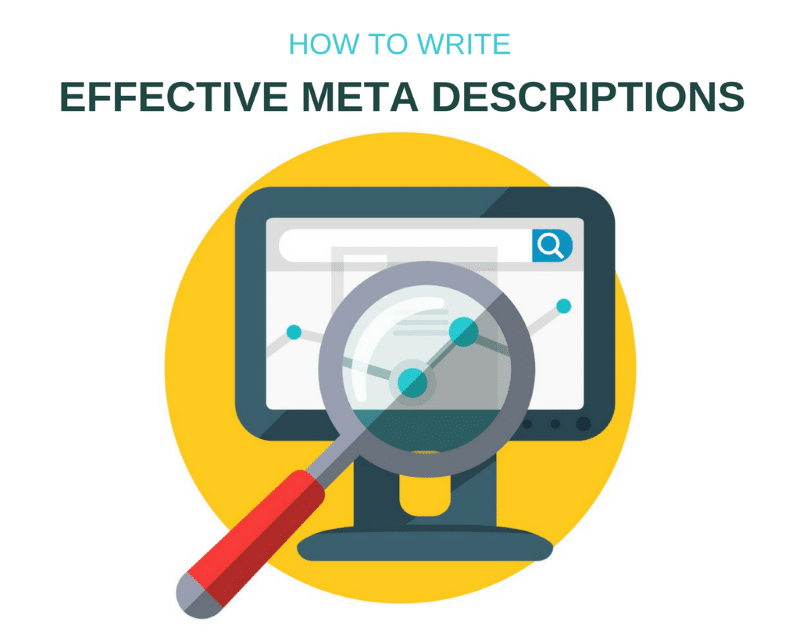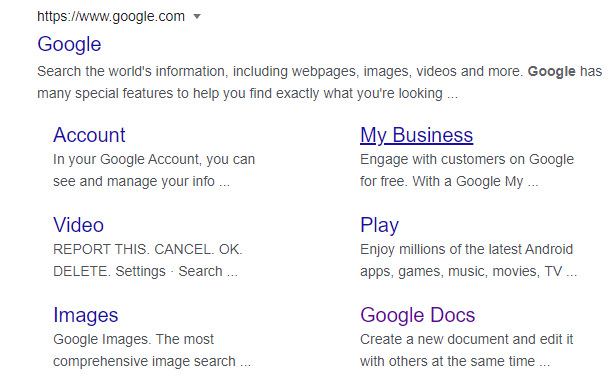Everyone with an e-commerce site, blog page, corporate site anything wants to rank at the top of search results. The organic SEO ranking can be increased by using various SEO tools and techniques but among them, meta description plays an important part.
The meta description will only help when it’s written well. Meta description must be compelling so that it attracts users to click on your link. Meta description must include keywords to boost SEO.
In this article, we are going to discuss various ways of writing meta descriptions that will help you to dominate Google search results.
What is Meta Description?
A meta description is 160-character snippets that provide a summary of your page. These are being displayed by Google under your page link to give viewers a brief idea about the page before clicking on the page.
Meta descriptions help the users to decide whether they want to click on your page or want to see some more results. As a decision-making factor is involved, so it makes meta description an important part of your website.
Below there is an example of a meta description
Why are meta descriptions important?
Meta descriptions are important as meta tags (includes title tags and meta descriptions) are used by the Google algorithm for deciding which pages to rank based on keywords used in meta tags.
Meta description helps:
- Increases clicks-through-rate (CTR) which will boost your conversion and lead generation.
- Increase in chances of getting indexed more quickly.
- Boost your rank higher on search engine pages.
Pages with meta descriptions see an average of 5.8 percent more clicks than pages without.
Every search engine giant like Google, Bing, Yahoo also recommends writing meta tags to get indexed and increase your SEO ranking.
Tips of Writing Great Meta Tags
Meta descriptions are a great way to generate leads and convert users through organic SEO and will improve your organic traffic.
Let’s discuss the common practices of meta description which will compel users to click on your page.
1. Include CTA in your meta description
Call-To-Action is those phrases that persuade people to take certain actions on your page. Including such CTA will compel users to click on your website. You can use phrases like “Shop Now” or “Click Here” or “Learn More” or “Apply Now” when the users see them on SERPs.
CTAs help readers beforehand what to expect from the page and what the page offers before they click the link. CTAs can be used for signups, subscribe to the newsfeed, sell products or direct to your social handle.
This example from Facebook asks users to join Facebook.
2. Focus on Adding Value to Your Meta Description
Adding words that clearly describe the value you offer to the user is a great way to make your meta description attractive. Reading meta description users will know whether the time spent on your page will be worth it or not.
Include words like “best,” “deal,” “new” “popular” “learn,” “see,” or “watch”, as per your content so that the user gets convinced and clicks on your page.
3. A/B Test Your Meta Description
To attract users and generate leads you should know which combinations of keywords, CATs, or phrases will be the best for you. So meta description is a great place to experiment with keywords, phrases, or CTAs.
Experimenting with meta descriptions will help you determine what drives more engagement without doing any unwanted and drastic changes in your web design.
Create two meta descriptions for each page. One with using keywords, phrases, or CTAs. The second meta description can be your current one or use different terms.
Now run both meta descriptions for a week alternatively and analyze the google analytics to see which version earns more clicks. Then use this information to make more meta descriptions.
4. Experiment With Character Length
A meta description is limited to 160 characters only. Going over the limit will cause your text to be shortened means the user will not be able to see over the limit characters.
Here’s an example of a truncated meta.
As now you know that crossing the limit will shorten your meta but still, we can do experiments with the character length. Experimenting will help you to wisely use the character limit.
You can use some in-depth guide in meta and write a long meta the text will be shortened which can create curiosity in users to know more. This can help you to get more clicks.
You can also experiment using short meta and see which works best on which page. But keep in mind anything excessive will have negative effects so keep the character limit in mind.
5. Make Your Meta Description Unique and Interesting
Meta Description is part that provides a brief content of the web page, so they are important to be attractive to get readers’ attention. Use different approaches to get users’ attention, use clickbait titles, or asking questions that users want answered.
Try using eye-catching words or phrases that will grab a user’s attention such as “shocking,” “hilarious” or “life-changing.” Just be careful not to overpromise and under-deliver.
As you have seen in the above example, they have asked a question, used an active voice, and kept it specific without any unnecessary details. This is important to rank high in SERPs. Most important thing is to make sure that the description matches the content of the page.
6. Include Keywords in Your Meta Description
It’s important to include keywords in the meta description for two reasons:
- It helps search engines understand the page and better rank your content.
- It reassures users that the page covers the topic they are interested in.
Use a keyword research tool like Google Keyword Planner to find the relevant keywords. Then, add those keywords to your meta description.
Make sure that each page uses different keywords so that the pages will rank on their respective search results. Including keywords in the meta descriptions is good for ranking and conversion. But Google does not use keyword meta tags for ranking web pages. That doesn’t mean it is not important for users’ understanding.
There are some warnings for you, avoid stuffing keywords in meta description or it can lead to a search engine penalty. Each meta description should contain one or two keywords per phrase and should be relevant to the page.
7. Implement Structured Data
Structured meta tags are HTML tags that you can add to your website providing extra context to the search engines and social media platform.
There are various ways in which structured data meta tags can be used. The most common way is by providing a business name, phone number, address, email id, product description points (if applicable), an image URL, and a Twitter handle.
You may have already seen some examples of structured data meta tags but the most common one is providing reviews of products in the meta description.
Using structured data meta tags will give a signal to the user that they will find something useful on this webpage. It also helps you to rank higher in SERPs.
8. Do Not Duplicate Meta Description
A meta description is a crucial part of ranking higher in search engines. So, writing a unique meta description for every page or blog is important it helps Google to identify the keywords and show the web pages as per the keyword search.
Using duplicate meta descriptions for every webpage will cause problems as the search engines will not be able to get the context of the page.
This is especially important for e-commerce sites, which may have several pages with similar content. Even if the products are similar, the metas should be unique.
Duplicate meta descriptions can have negative effects on your website as they make it difficult for meta description crawlers to crawl your site. You may also face indexing penalties because crawlers are not able to determine which page is original.
Examples of Great Meta Description
The best examples for meta descriptions are search engines themselves and also some companies that take care of writing their meta description.
By Google:
By Tesla:
How to Write Meta Descriptions: Conclusion
A meta description is an important part of onsite SEO, they help in ranking higher in search engine result pages.
The meta description must be attractive, compelling and should provide a brief overview of the page. They also help search engines to understand the context of the page so that the page can show up as the related keyword searches.
Remember to include meta descriptions on every page of your site, including blog posts and product pages.








